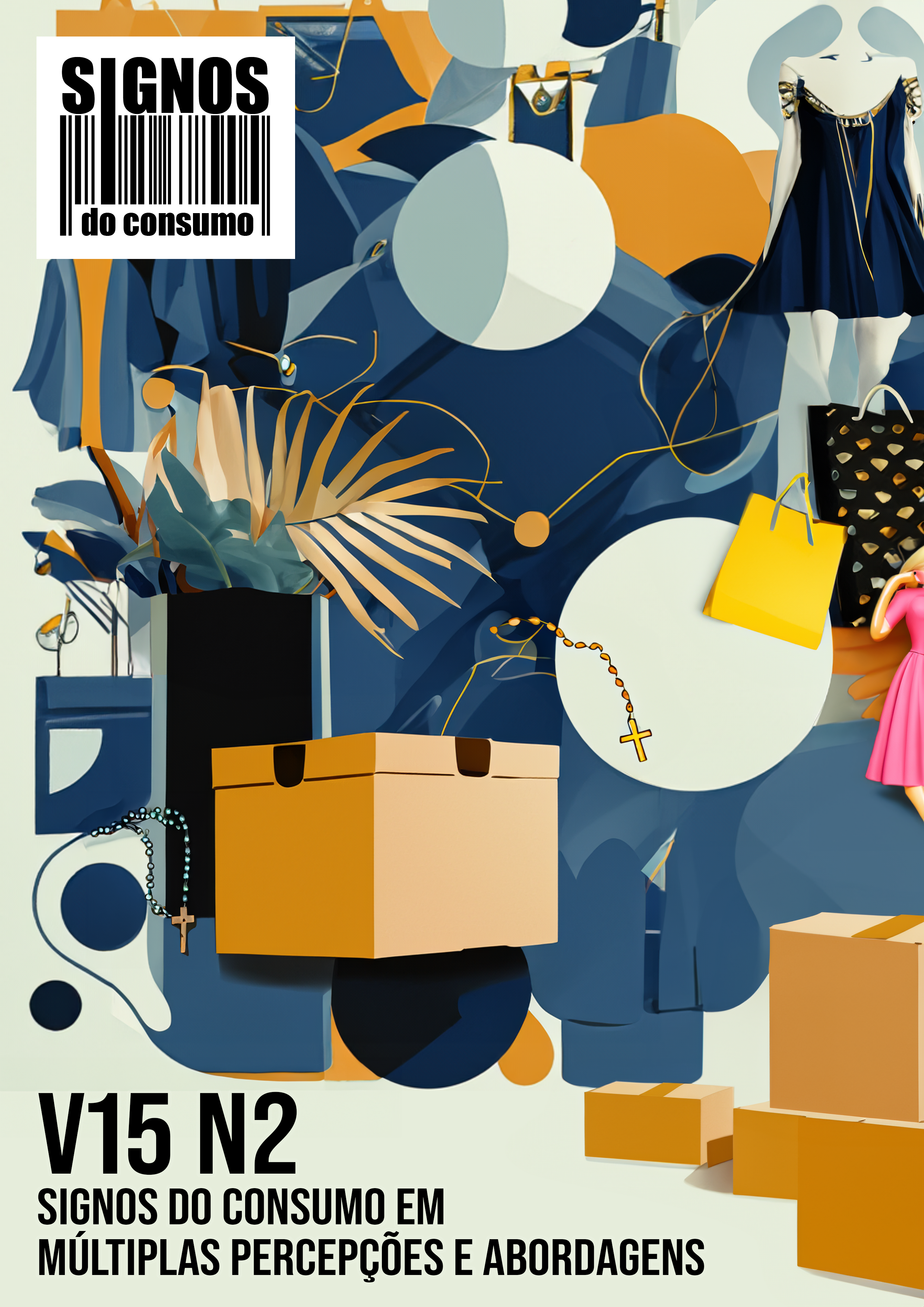The Little Aunt against Marie Kondo: semiotic reflections n consumption and religion
DOI:
https://doi.org/10.11606/issn.1984-5057.v15i2e221372Keywords:
religion, consumption, semiotics, minimalism, material cultureAbstract
This article explores the interaction between consumption practices and religious beliefs. Using the personal example of the “Little Aunt”, who accumulated objects, the article examines how religious and cultural values influence the way people consume and preserve material goods. The text also analyzes the ideology behind these consumption patterns, relating them to Christian doctrine and religious semiotics and comparing them with contemporary consumer ideologies, highlighting the differences and similarities between them.
Downloads
References
BERGER, Arthur Asa. Marketing and American consumer culture: A cultural studies analysis. Cham: Palgrave Macmillan, 2016.
BOERO, Marianna. Linguaggi del consumo: segni, luoghi, pratiche, identità. Roma: Aracne, 2017.
COLES, Benjamin. Imagined geographies of the marketplace: fashioned materialities. In: COLES, Benjamin. Making markets making place: geography, topo/graphy and the reproduction of an urban marketplace. Cham: Palgrave Macmillan, 2021. p. 47-76.
FOSSALI, Pierluigi Basso. La promozione dei valori: semiotica della comunicazione e dei consumi. Milano: FrancoAngeli, 2012.
GANASSALI, Stephane; MATYSIEWICZ, Justyna. “What a lot of things I don’t need!”: consumption satiation, self-transcendence and consumer wisdom. Journal of Consumer Marketing, Bingley, v. 38, n. 5, p. 540-551, 2021.
HAROLD, Christine. Things worth keeping: the value of attachment in a disposable world. Minneapolis: University of Minnesota Press, 2020.
JEON, Hyeong-Yeon et al. A semiotic model of South Korea’s cultural industry ecosystem: the K-pop industry. Semiotica, Berlin, v. 2023, n. 252, p. 97-117, 2023.
LAURINO, Antonio. Per una nuova assiologia del consumo: una proposta di ampliamento, approfondimento e aggiornamento del modello flochiano. Ocula, Bologna, v. 21, p. 1-29, 2020.
LIU, Wing-sun; LI, Eric Ping Hung; LAM, Magnum Man-Lok. Double ‘in-process’ identity project: an ethno-semiotic study of the transformation of new chinese young consumers in Shanghai. Fashion, Style & Popular Culture, Bristol, v. 10, n. 3, p. 331-350, 2023.
MENELEY, Anne. Consumerism. Annual Review of Anthropology, Palo Alto, v. 47, p. 117-132, 2018.
PELLEREY, Roberto. Semiotica e decrescita: obiezione al consumo, cooperazione internazionale e sovranità alimentare: un nuovo paradigma. Milano: FrancoAngeli, 2015.
PÉREZ, Clotilde; POMPEU, Bruno. Moda mimética, desviante e criativa: em busca da secundidade perdida. Designis, Rosario, n. 32, p. 49-61, 2020.
SCHEMBRI, Sharon; MERRILEES, Bill; KRISTIANSEN, Stine. Brand consumption and narrative of the self. Psychology & Marketing, New Jersey, v. 27, n. 7, p. 623-637, 2010.
SMALL, Robert Grafton. Consumption and significance: the shape of things to come. Scandinavian Journal of Management, Amsterdam, v. 9, n. 2, p. 89-99, 1993.
TAUPIN, Philippe. The contribution of narrative semiotics of experiential imaginary to the ideation of new digital customer experiences. Semiotica, Berlin, v. 2019, n. 230, p. 447-473, 2019.
WOODWARD, Sophie. Meaningful objects and consumption. In: WHERRY, Frederick F.; WOODWARD, Ian (ed.). The Oxford handbook of consumption. Oxford: Oxford University Press, 2018. p. 167-178.
Downloads
Published
Issue
Section
License
Copyright (c) 2023 Massimo Leone

This work is licensed under a Creative Commons Attribution-NonCommercial-ShareAlike 4.0 International License.
Authors retain copyright and grant the journal right of first publication with the work simultaneously licensed under a Creative Commons BY-NC-SA License.




